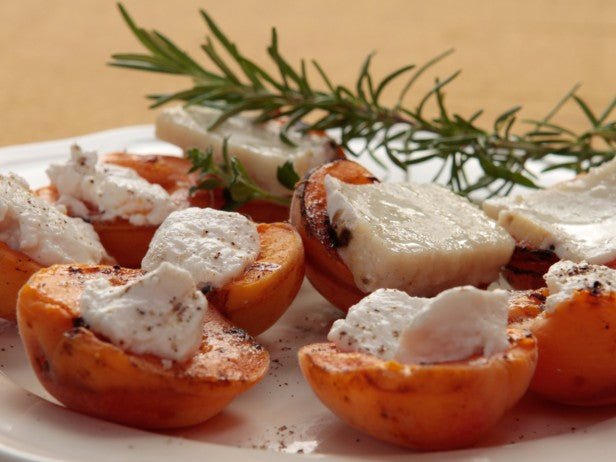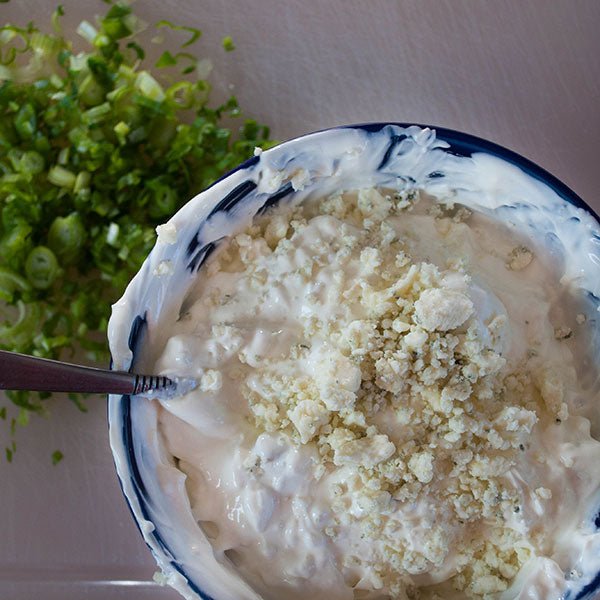
Brian Wort is the farm manager at the P.A. Bowen Farmstead, owned by Sally Fallon Morell and her husband, Geoffrey. (Sally Fallon is the founder and longtime president of the Weston A. Price Foundation and the author of the popular cookbook, Nourishing Traditions.) Sally and Brian work together to make the award winning cheeses they sell.
Cream always rises to the top (to coin a phrase) and we think of Brian Wort as rising rapidly to the top of his profession. In less than two years of making cheese at P.A. Bowen and managing overall production, he has helped win two awards at the American Cheese Society Competition, and that’s a remarkable beginning!
Brian worked at a farm in California before he was recruited to manage the farmstead in Maryland. His career path had gravitated from the restaurant business, retail, internet development/marketing/tech support, and scouting toward agriculture because he was brought up to love it. In fact, he was raised in the Midwest where his grandparents on both sides were farmers. His most recent passion before his current career was for beekeeping and he served as President of the Mount Diablo Beekeepers Association from 2010-2013, one of the largest hobby beekeeper clubs in the country.
Brian lives with his wife, Amy McCurdy who works as the sales and marketing manager for the farm and their two boys-Dylan (14) and Vincent (10).
 Interview
Interview
How did you begin making cheese?
My first attempts at cheese making were simple ricotta recipes gleaned from magazines and cookbooks, all producing varying degrees of success, but without any real understanding of the process. After considering Ricki’s book for a few years, I finally purchased Home Cheese Making in 2006 and began improving my knowledge – and therefore my ricotta. I started branching into more fresh cheeses – cream cheese, yogurt cheese, etc.
Then, I made my first Mozzarella – it was so much fun to make and so much easier than I anticipated. It was perhaps a little too squeaky but I loved it and obsessively made more and more until it became apparent there is only so much room in the refrigerator! Even our two boys, who loved my homemade string cheese sticks, were getting tired of having it in their breakfast, lunch, snacks, dinner… It was time to move into harder cheeses I could age for a while, if only to give my family a break.
Cheddar was my first hard cheese – I sealed them with beeswax from my own hives. Lacking a proper press, they were lopsided but delicious! I just say with a smile, “It’s supposed to look like that.”


How did you end up making cheese professionally?
Sally Fallon Morell found me through the farm I was working at in Butte County, CA which happened to be owned by our Weston A. Price Foundation chapter leader (and also the 4-H leader for our boys). I was hand-milking two beautiful Jerseys named Ellen and Buttercup, and a small handful of goats for Carol and Kurt Albrecht of Chaffin Family Orchards, and was just making cheese for our families in my kitchen. I made a LOT of great cheese with that milk. I drank a lot of it too – Buttercup would always lick me while I milked her – I probably smelled like her calf!
The Albrechts are incredibly wonderful and generous people, and gave me the opportunity to learn farming the way I wanted to pursue: rotational grazing, pasture-raised poultry, corn/soy-free, no chemical inputs – using the animals to work the land makes both so much healthier and more sustainable. They were also kind enough to know I would thrive even more here at Sally’s P.A. Bowen Farmstead. I am forever grateful to them for all their help and support.
Sally has a small herd of Jerseys, with one Brown Swiss and one Shorthorn/Normandy mix, and we breed here on the farm with our own Jersey bulls. We milk once a day and dry the cows off at the end of December until they calve again in the spring. This is easier on the cow than keeping her in perpetual lactation the way most modern dairies do. We rotational graze them on pasture exclusively except for a little treat of our own grind of organic field peas, barley and sorghum seed mixed with some coconut meal and a little apple cider vinegar, molasses and probiotics. We also use a mineral supplement program developed by Jerry Brunetti for his company Agri-Dynamics. We do not feed any corn or soy. The milk is heavenly, and makes wonderfully rich, flavorful cheese. We make four varieties: a traditional, peg-milled, clothbound cheddar called Chesapeake Cheddar; a Blue Stilton style called Prince George’s Blue; an aged Jack called Aquasco Jack; and a White Stilton style called Dreamy Creamy. The first three have each won an award from the American Cheese Society, and two of them were obtained since I have been here.


Sally has an incredible cheese making facility. She was part of the pilot program to get raw milk cheeses approved in the state of Maryland. Designed by Neville McNaughton, the facility is state of the art and includes its own lab for regular testing of the milk. The milking parlor is New Zealand style, where the milker stands lower than the cows so there is no bending over. We use claws to milk directly into cans, which are then swiftly taken to the transfer room where the milk is put into the milk vat, which also serves as our cheese vat on cheese making days. We make cheese twice a week right now, but we have some yearlings (born here) joining the milking herd in the spring, so we expect to add another day next year. We had several more heifers born this year, so we are growing the herd nicely to accommodate the increasing demand for our cheese.
Working with professional equipment has been a thrill. I’m proud that I can hobble together a rudimentary press with a #10 coffee can, wooden follower boards and a few bricks, but the hydraulic press we use is way better! I also love the larger vat – it holds 1000 lbs. of milk. It may be small in comparison to larger cheese operations, but is far beyond my stockpot on the stove.
I also love having a real aging room – it’s a cheese lover’s paradise to see all those beautiful wheels gracefully maturing. It’s great to have several wheels from a batch to try periodically to see how they are progressing. Affinage is something I am really interested in developing my skills further; the possibilities for experimentation are exciting to me.

Do you have a favorite cheese to make?
This is hard to answer – I am still learning, practicing, experimenting; there are so many cheese types I want to try my hand at. Of Sally’s cheeses, I really enjoy the process of the Chesapeake Cheddar: the turning of the cheddars to expel the whey, the hand-milling with the peg mill… the buttery smell! Even the larding – and it’s so good for my hands too! It sounds weird when I say it out loud, but there is a tactile sensuality in making cheese. The silkiness of the the soft curd in the first several turnings of the Prince George’s Blue, the rhythmic salting of the wheels, the textured feel of the rind as it develops and hardens. Thoreau wrote in Walden “I have clever hands” – that has always resonated with me, and is my personal connection to the handicraft of artisinal cheese making. It is beyond sculpting, it’s more like guiding.
One of the things I love about Giancalis Caldwell’s book “Mastering Artisan Cheesemaking” is her “Think Outside The Vat” concept, because this is exactly my own modus operandi; I am practically incapable of following a recipe verbatim without modifying it somehow. “Hey, some of this would be really good in here” or “if i do this first instead…” My mom taught me how to cook that way. She was MacGuyver in the kitchen; she could make something yummy out of anything. With cheese, however, I do try recipes as closely as possible the first time and just add notes to my cheese journal about what I want to vary the next time.
At this point I am probably more into making semi-soft to hard cheeses, but that may change. I am playing with different ideas to find a new variety to add to the P.A. Bowen Farmstead line-up, hopefully within the next year or two.
What do you do for fun when you aren’t making cheese?
Hmmm… visit with the calves. Feed the piggies. Pull weeds in the garden. Cook. Play my guitar. Anything that keeps my hands busy is good – I can’t sit still too long. I read a lot, so that’s my quiet time. Spending time with my family is important to me, and one of the things I am very grateful of for working on a farm – it’s all home.

What advice would you like to give to home cheese makers who might be thinking about doing it professionally?
Keep a journal of everything you do and write down every detail for each batch – not just ingredients but techniques, tools, etc. It sounds onerous but it really isn’t once you make it part of your routine. It’s the best way to know which variables you want to address further. Try to recreate the same thing and note the differences that shake out anyway. I learned to do this when I was beginning to make sourdough bread. I kept notes of every batch and it helped me refine my breadmaking into a few really good recipes that I can rely on. That allowed me to take my bread to a more professional level where people wanted to purchase it. That was gratifying but I didn’t really want to be a professional baker – I really don’t eat much bread. But I do eat a lot of cheese! 🙂
It also creates a wonderful paper trail for presenting any due diligence for inspection or licensing purposes. Cheese is considered a high-risk product and you have to be very buttoned up. If you can show good record keeping skills, you will instill more confidence in your abilities to yourself and others. Create a solid HACCP (Hazard Analysis & Critical Control Points) plan and follow it unwaveringly.
I would like to share my favorite inspirational message, which appeared to me on the side of a bus in San Francisco many years ago. It was a quote from Arthur Ashe: “Start where you are. Use what you have. Do what you can.” I have lived by that advice and it has taken me to heights I never imagined I could achieve. Thank you, Mr. Ashe!
And, thank you, Mr. Wort! We hope to see you at the next ACS Conference.





















































































































































